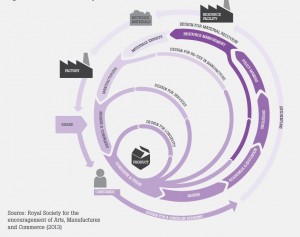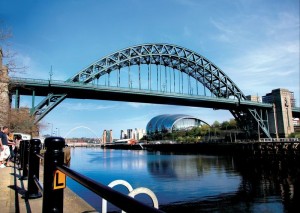Posted by David Bradley, 2nd April 2014
David Bradley and Mike Coombes having successfully piloted ground breaking research involving young people from two Tyneside primary schools in ‘sense-of-place’ work, involving the use of GPS enabled cameras have taken the project design one step further. By working in partnership with two north east companies – innovative web designers Durham Associates and on-line database specialist Bryan Latty the team have designed an online survey suitable (hopefully) for young children. It is hoped that this innovation will make sense-of-place work with schools more easily replicable.
Holystone Primary school volunteered to pioneer the use of the new online sense-of-place survey and to test the use of a range of digital equipment including GPS enabled cameras and an i-pad. The aim of the research was to help young people to appreciate more and understand better their local environment, and to value those buildings and spaces that others including their peers regard as important.
This research built on our recent experience of working with primary schools in Tyneside funded by the Catherine Cookson Foundation to develop the local pride and place attachment of young children. The project adds to our national research for English Heritage on the impact of the built environment on young people’s sense of place involving young people aged 13-15. For more information about these research projects see http://www.english-heritage.org.uk/publications/historic-buildings-young-people/ . This research built on earlier national level CURDS research on “Sense of Place and Social Capital and the Historic Built Environment” which was summarised in the 2009 Heritage Counts Report. http://hc.english-heritage.org.uk/Previous-Reports/HC-Sense-of-Place/
This pilot work has helped to develop a teaching framework which it is hoped will continue to prove successful in engaging with young people, making a valuable contribution to increasing their pride in and awareness of their local historic assets. The project involved 57 year 4 pupils attending Holystone Primary School in North Tyneside (slightly more than the 50 planned). Data was successfully captured in relation to:
• Which buildings and spaces in the local area are important to them
• What is it about them that is important
• Which buildings and spaces do they dislike
• Where are these buildings in relation to where the young people live
• Are there any patterns to the characteristics of young people and their choice of buildings and spaces in the local area
The results of these pilot studies suggest that a full national study could be expected to reveal fascinating differences in the preferences of different aged children living in different residential environments. The success of these pilots with young children indicates the potential to go beyond finding out what aspects of the built environment children regard as important. With further research funding the aim is to create a web-based teaching framework and suggestions for activities that will successfully engage young people, actively increasing their appreciation and understanding of their local environment.
The findings of this research are summarised in Bradley DP. Buildings, Monuments and spaces that are important to young people and the contribution of the historic built environment to young people’s sense of place. Regions Magazine 2011, 284(1), 5-8. (1.10 MB)



